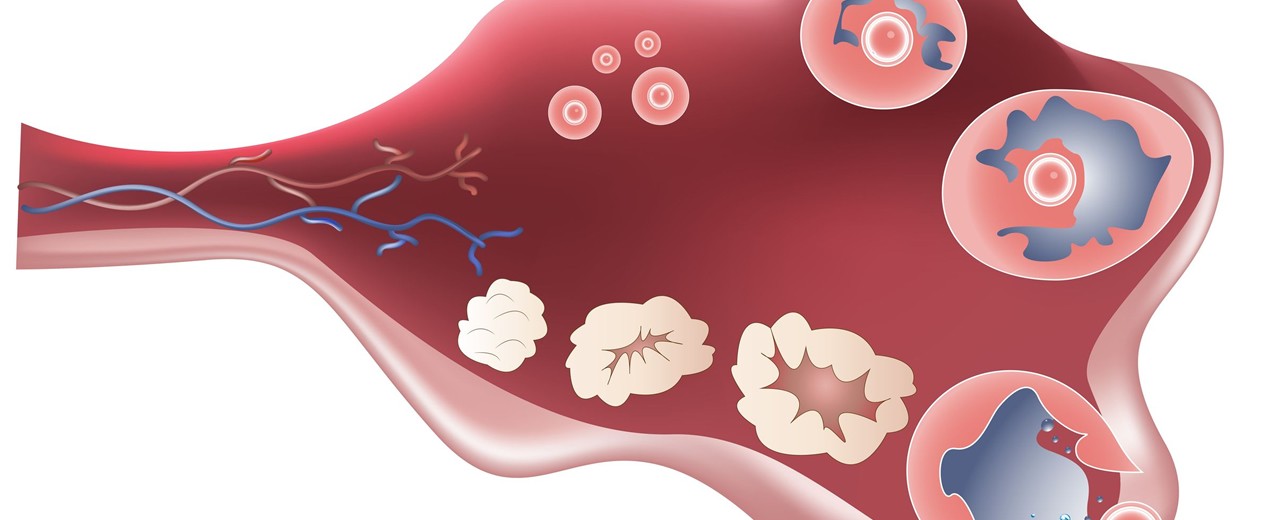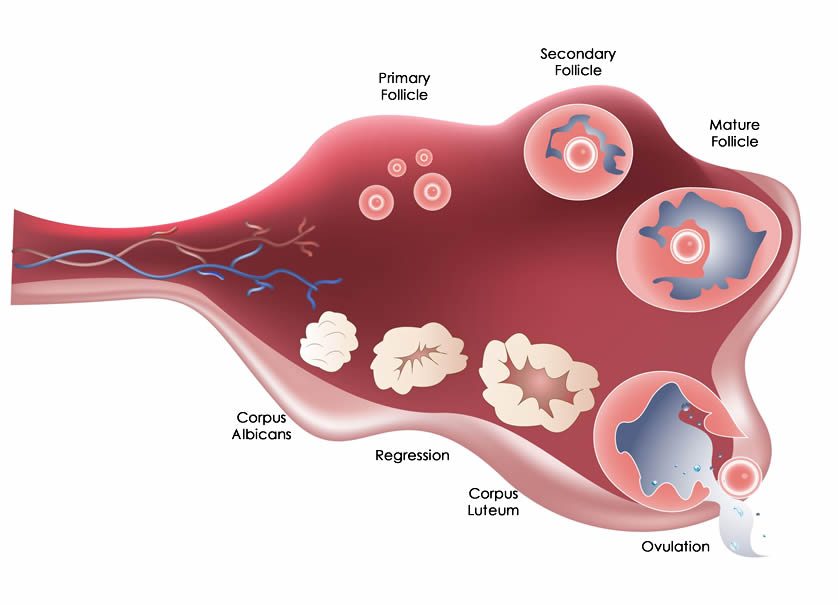Ovulation process

In this post we will describe in a few simple words the process of ovulation.
Initially, the body wakes up some of the follicles that are inside the ovary. Recall that women are born with a certain number of eggs, which we use during our fertile life. When this follicular reserve is depleted, then menopause occurs.
The first form of follicles are the Primary Follicles. Under a stimulus effect, Primary Follicles grow, mature and develop into Secondary Follicles.
Once the procedure is completed successfully, 1 or 2 of these follicles will be transformed into Mature (Sovereign) Follicles.
At that point, the secretion of large amounts of the LH hormone begins. LH is the so-called ovulation hormone and it is what the ovulation tests detect. Without secretion of large quantities of LH, ovulation is not possible since it is the only way to break the follicle and release the egg from within.
24-48 hours after LH surge, the Mature Follicle breaks and releases the egg, that nourishes all this time, to make its way to the fallopian tube and fall into the uterus. This process is called ovulation.
If this egg, during its descent through the fallopian tube, is fertilized by the sperm (Conception), then it will fall into the womb, adhere to its wall (Implantation) and pregnancy will begin.
If the egg falls into the womb without being fertilized by the sperm, it will adhere to the wall of the womb and will be absorbed by the endometrium. The body will reject this endometrium through the vagina (menstruation) and a new cycle will begin.
The empty follicle is then turned into a gland called Corpus Luteum. The Corpus Luteum is responsible for producing large amounts of estrogen and progesterone in order to prepare the endometrium for possible implantation. If pregnancy is achieved, the Corpus Luteum continues to function for about 5-6 months. If pregnancy is not achieved, the Corpus Luteum degenerates and is absorbed by the ovary.
The graphic below shows in a simple way the process of ovulation.

The procedure described above is summarized in the following phases of the cycle:
a. Follicular Phase
It is the phase from the first day of the cycle (period day 1) until the day of ovulation. During this phase, the body prepares and matures the follicles. This phase normally lasts 14 days.
b. Ovulation
It is the phase of the cycle during which the mature follicle breaks and releases an egg.
c. Luteal Phase
It is the phase after ovulation and until the next period (unless of course there is pregnancy). The duration of this phase normally lasts 14 days.
Therefore, the woman's cycle under normal circumstances lasts 28 days (14 days follicular phase + 14 days luteal phase). When the cycle is not 28 days, in most cases the follicular phase is the culprit. The luteal phase is for the most part the "fixed phase" of the cycle. That is, if the cycle is for example 30 days, in most cases it means that the follicular phase lasted 16 days and the luteal phase lasted 14 days (16 + 14 = 30).
--------------------
See all of our blog posts, by clicking here.
0 comment(s)